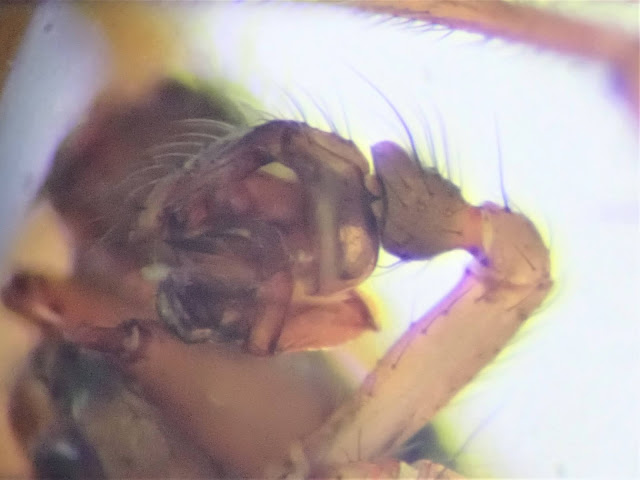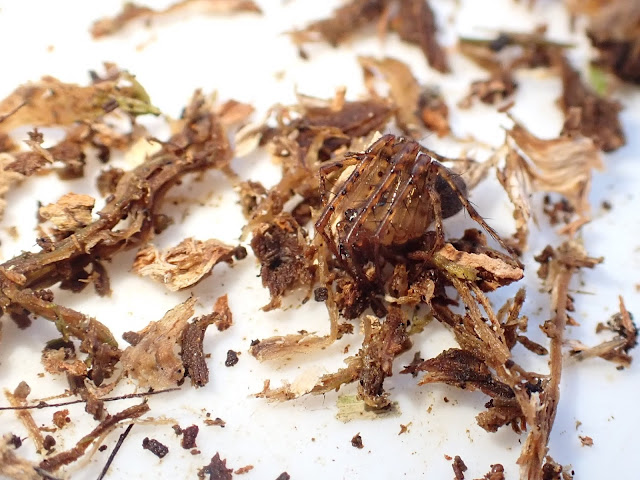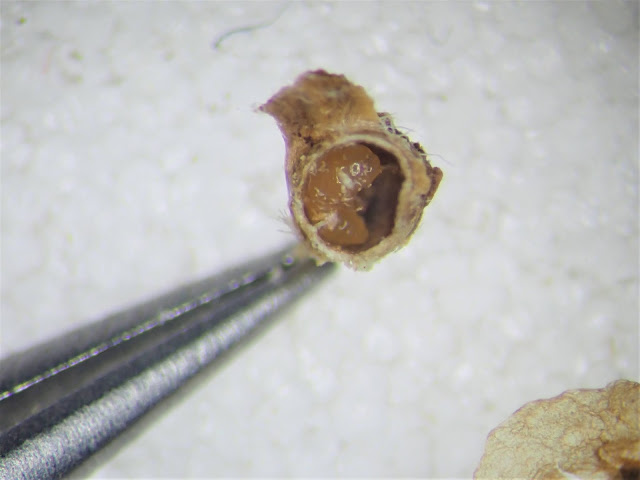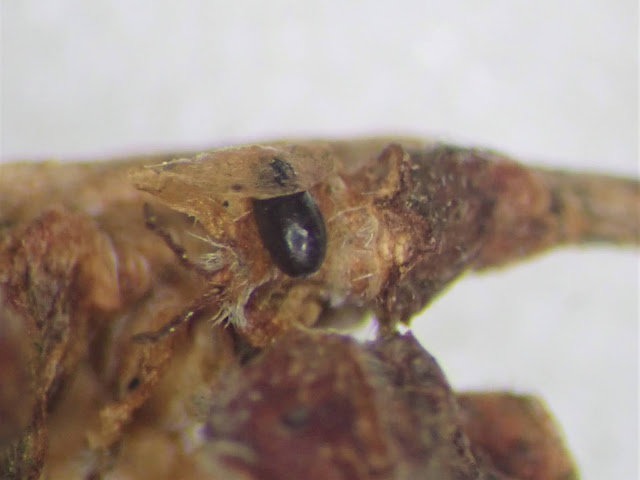Last night we enjoyed a decent snowfall and I was keen to head into the hills to enjoy it. As of tomorrow I'm back on duty, so this will be my last outing in daylight until next weekend.
 |
| The view up Glen Conon is stunning |
 |
| et voilà, a tussock! |
A man I've never seen before came wandering down the hill and clambered the fence about 40ft from where I stood motionless, nose in my tray, pooter in my mouth. Then he took his coat off and yelled "Good morning world!" through the woods. "What's that, mate?" I asked, causing him to spin around in startlement. "Oh aye, er yeah..." he said, before pulling at his jumper. Was he about to strip naked right in front of me, I wondered? And there I was thinking that I was the biggest weirdo in the woods. Luckily he soon finished rearranging himself and stood there facing into the trees ahead of us. I figured it was a good time to quit the tussocks and head off in the opposite direction, which I did with purposeful strides, trying my best to look impressive and definitely not the kind of person you'd want to mess with.
There's a short section through the woods where you're effectively pinched between the fence line and a long drop into the river far below. At its narrowest point the woodland floor here is only about twenty feet wide. I walked through this narrow squeeze and continued ahead into the woods. After a hundred metres or so, I circled back to view the narrow point from about fifty metres dowhill. I then waited to see whether the weirdo was following my footprints. Eventually I figured not and resumed my tussocking. In all the times I've been in these woods, this is just the third occasion I've ever seen another soul up here, and the first time I didn't recognise the person. Happily, the tussocks were rather more productive beneath these larger trees and I even found a few handfuls of dry leaflitter amongst the roots of a huge Sycamore. The dry leaves in particular revealed lots of invertebrates for me to pick through.
 |
| Stenus sp. - that's one I don't have to worry about this year! |
 |
| Othius punctulatus - another one I don't have to worry about this year |
 |
| This bizarre thing is actually a fly larva |
 |
| Nemastoma bimaculatum - I had eight of these in the tray at one point! |
 |
| This is a male Ischiolepta denticulata with its amazing scutellar teeth and warty-looking surface |
 |
| Being a male, it has a tiny tubercle (arrowed) near the base of the hind femur. Not easy to see! |
But it was the same old story with the spiders I collected, either subadult males or adult Tenuiphantes zimmermanni. Yet again. Supposedly you can often find several species of Tenuiphantes together, but Uig Wood seems to be bucking that trend. One was a particularly darkly-abdomened individual and I felt confident it would be a different species. Nope, still a flippin' zimmermanni!
 |
| The palps don't lie |
And here's a more typically patterned male Tenuiphantes zimmermanni
I do hope I'm not overlooking other species amongst the zimmermanni I'm finding. Trying to translate the image in the book to what you're looking at in real life is not as easy as you might think. Spider palps are complicated 3D structures, stunningly so in fact, but that makes them difficult to accurately reproduce on paper. Hence the 2D figures in the books, magnificent though they are, inevitably fail to adequately convey the various different parts that you see whilst looking down the barrels of a microscope. So saying, I'm fairly certain I haven't misidentified any tenuis yet. He says...
This is a female Lepthyphantes minutus that I found in the laundry shed a couple of days back
I suspected that's what it was straight away, due to the heavily annulated orange legs and mass of leg spines. But I needed to check the epigyne to confirm that ID. Oh boy, what an epigyne it is too! All attempts at a 'head-on' shot failed, it projects outwards too much for the camera to stack properly. So here's a profile view of it instead
In my head, I see epigynes as being rather flat objects laying against the 'belly' of the spider. But this thing juts out almost like a weird proboscis! Happily it matches Lepthyphantes minutus perfectly, so that's another bit of learning done and confirmed.
Ok, so that's my adventuring outside of the hotel grounds done for another week. Not sure what the weather is doing over the next few days, but I'll be checking the walls and laundry shed after dark in search of who knows what. I may have to get some bait traps going at some point soon too, especially now that I know Sylvicola are attracted to them. Then again, if the snow keeps up it may not be worth it. I won't know if I don't try!






















































